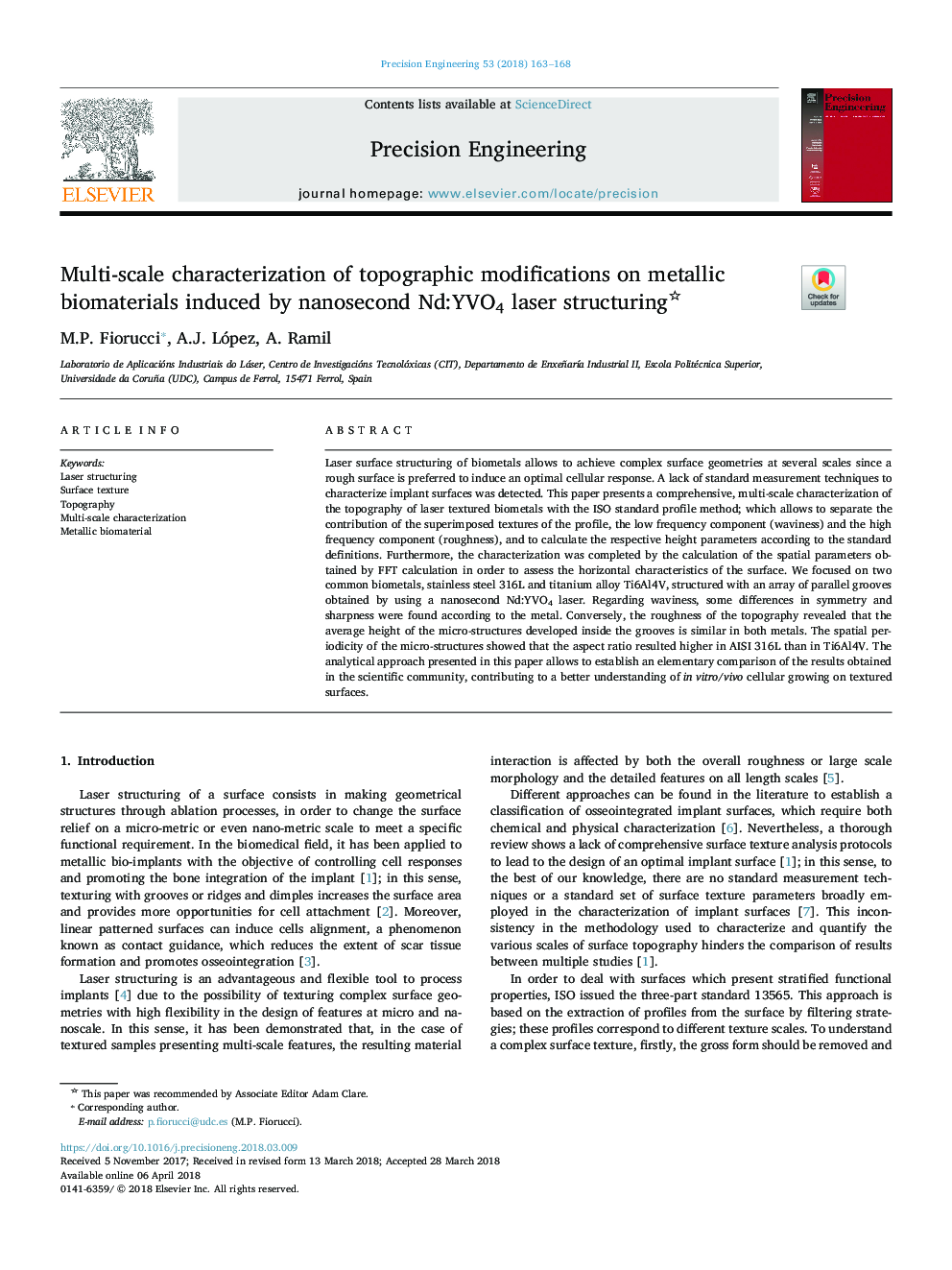| Article ID | Journal | Published Year | Pages | File Type |
|---|---|---|---|---|
| 7180348 | Precision Engineering | 2018 | 6 Pages |
Abstract
Laser surface structuring of biometals allows to achieve complex surface geometries at several scales since a rough surface is preferred to induce an optimal cellular response. A lack of standard measurement techniques to characterize implant surfaces was detected. This paper presents a comprehensive, multi-scale characterization of the topography of laser textured biometals with the ISO standard profile method; which allows to separate the contribution of the superimposed textures of the profile, the low frequency component (waviness) and the high frequency component (roughness), and to calculate the respective height parameters according to the standard definitions. Furthermore, the characterization was completed by the calculation of the spatial parameters obtained by FFT calculation in order to assess the horizontal characteristics of the surface. We focused on two common biometals, stainless steel 316L and titanium alloy Ti6Al4V, structured with an array of parallel grooves obtained by using a nanosecond Nd:YVO4 laser. Regarding waviness, some differences in symmetry and sharpness were found according to the metal. Conversely, the roughness of the topography revealed that the average height of the micro-structures developed inside the grooves is similar in both metals. The spatial periodicity of the micro-structures showed that the aspect ratio resulted higher in AISI 316L than in Ti6Al4V. The analytical approach presented in this paper allows to establish an elementary comparison of the results obtained in the scientific community, contributing to a better understanding of in vitro/vivo cellular growing on textured surfaces.
Related Topics
Physical Sciences and Engineering
Engineering
Industrial and Manufacturing Engineering
Authors
M.P. Fiorucci, A.J. López, A. Ramil,
